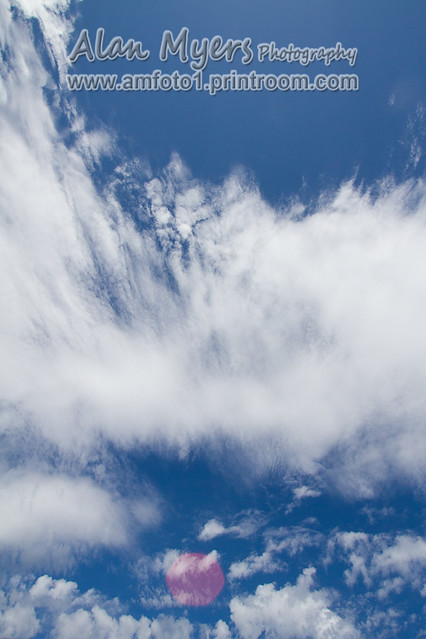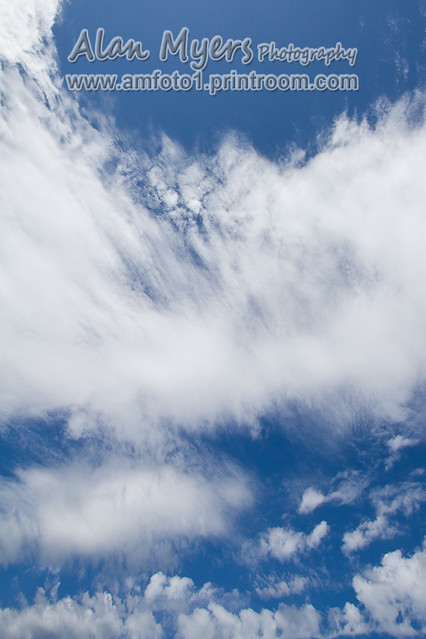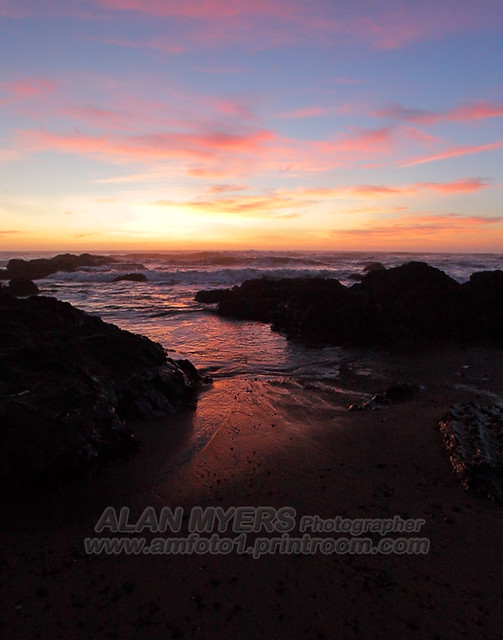Two lenses: which gets the best picture quality?
Jun 10, 2017 09:25:51 #
In addition to what has been said here do not forget that quality depends more on you than on the lens.
Jun 10, 2017 09:33:12 #
illininitt wrote:
1- Canon EF-S 10-18mm f/4.5-5.6 IS STM
2-Sigma 18-250mm 1:3.5-6.3 MACRO HSM
RMNP trip next week. Seven days.
Canon T31. I will be shooting mostly landscapes. Is it best to leave camera in Program or landscape most of the time? I have never used a lens hood....but have bought one for each lens. Have a CP for each lens...are they a must to use or not?
2-Sigma 18-250mm 1:3.5-6.3 MACRO HSM
RMNP trip next week. Seven days.
Canon T31. I will be shooting mostly landscapes. Is it best to leave camera in Program or landscape most of the time? I have never used a lens hood....but have bought one for each lens. Have a CP for each lens...are they a must to use or not?
This is an interesting question - they are two completely different animals ! Each are very likely to be best in the middle of their range ie. - 14mm for the wide and about 75-100mm for the tele.
You definitely want proper lens hoods and to use polarizers when you can tolerate -2 stops of light at the sensor.
Jun 10, 2017 09:53:56 #
waegwan wrote:
Take them both. The Canon will probably give sharper images in its range but a week in the Rockies could easily beg the use of the Sigma's reach. IMO. Don't use Landscape mode use manual mode and spot metering and make the appropriate camera settings.
My thoughts as well. I would take both lenses, as I would hate to miss an opportunity for a shot not having the right lens.
Jun 10, 2017 10:59:48 #
the canon will , but the sigma is the one to use due to its coverage , a good walk around lens .
Jun 10, 2017 11:42:10 #
amfoto1
Loc: San Jose, Calif. USA
illininitt wrote:
1- Canon EF-S 10-18mm f/4.5-5.6 IS STM
2-Sigma 18-250mm 1:3.5-6.3 MACRO HSM
RMNP trip next week. Seven days.
Canon T31. I will be shooting mostly landscapes. Is it best to leave camera in Program or landscape most of the time? I have never used a lens hood....but have bought one for each lens. Have a CP for each lens...are they a must to use or not?
2-Sigma 18-250mm 1:3.5-6.3 MACRO HSM
RMNP trip next week. Seven days.
Canon T31. I will be shooting mostly landscapes. Is it best to leave camera in Program or landscape most of the time? I have never used a lens hood....but have bought one for each lens. Have a CP for each lens...are they a must to use or not?
I have little doubt the EF-S 10-18mm IS STM will have the better overall image quality and you'll find it very useful for landscape photography.
The compact, inexpensive 10-18mm gets very favorable reviews. It's lightly built (plasticky), but very capable optically. It's one of the few ultrawide zooms with image stabilization... which may not be as essential on a lens like this, but is sure nice to have. Part of the reason for its very good image quality is that it's a mild 2X, wide-to-wide zoom.
You will also want the 18-250mm for it's telephoto "reach". Hopefully it's an "OS" or "optically stabilized" lens, because that's much more important with relatively strong telephotos. This "do it all" type of zoom is all about convenience, but typically compromises in one or more other ways. I'm not familiar with that particular lens... don't use it and will never own a lens of that type. But most zooms that are 10X or greater are slower focusing, don't control aberrations very well, aren't particularly sharp at some focal lengths and/or are "slow" with relatively small max aperture. Also, zooms that try to cover wide-normal-telephoto focal lengths often struggle to have even illumination and tend to have barrel distortions at one end, pincushion distortion at the other end of their focal length range. I do use some wide-normal-tele zooms, but they're relatively mild models(24-70mm and 28-135mm... 3X and 5X). My telephoto zooms are tele-to-tele (70-200mm 3X and 100-400mm 4X).
However, you will see wildlife in RMNP, so be sure to have that Sigma lens handy for it's telephoto "reach". In particular, there are nearly always elk somewhere in the park. Sometimes bear, too. Just be careful photographing both! Other critters are certainly possible, too. Most are somewhat accustomed to people and traffic, so you can get pretty close (or even too close!) but will need the 250mm end of that lens.
Glad to hear you got hoods for both lenses... USE THEM! They can help your images by shading the lens from oblique light, as well as provide some physical protection for the lens while shooting with and carrying it. I almost never shoot without a lens hood. In fact, my Canon EF-S 10-22mm uses a bulky lens hood... sort of like a small Frisbee... When I first got the lens, hood and learned that, I really didn't want to have to carry the hood around. I also knew it's an exceptionally good lens controlling flare. So I though maybe I could do without the hood, and tried some test shots...
Without hood...

With hood...

So, okay... I carry and use that hood too, in spite of it not fitting in my camera bag very well! I use hoods on all my other lenses, nearly 100% of the time. Your 10-18mm uses a much more compact hood, so there are no excuses! Use it! I don't know about the 18-250mm lens' hood... That's another problem with those super wide range type of zoom... it's difficult to design a really effective lens hood for it. Even so, I'd recommend using it!
Regarding the circular polarizing filter.... that's another good idea. You're likely to find it particularly useful for landscape shots. A C-Pol deepens the blue of the sky and color saturation of foliage and other things. It also can help reduce reflections off water, glass, etc. It's the most useful type of filter, for digital photography. I used one for the shot below, to deepen the blue of the sky and the green of the water...

C-Pol are most effective at 90 degree angle from the light source. For the above shot, the sun was almost directly overhead, so nearly perfect location as far as the filter was concerned. The strength of a C-Pol can be adjusted. In this case I didn't use the filter at it's fullest strength. Because I wanted to retain some of the reflections of the white boats in the water, I dialed the filter back a little.
Full sunshine isn't the only time to use a C-Pol, either. On overcast days, foliage will often reflect the white clouds in the sky. A C-Pol can be a very big help, reducing those reflections and boosting color saturation. They also can be useful indoors... controlling reflections off glass such as windows... even people's eyeglasses or shiny skin with portraits.
While one can often be useful, you don't want to leave C-Pol on your lens all the time. They cut between 1 and 2 stops of light, which can be significant in challenging lighting, forcing you to use too slow a shutter speed and/or a higher than necessary ISO that will effect image quality. Because they are one of the most useful filters with digital, I only use high quality, multi-coated B+W Kaesemann and Hoya HD2 or HD3 circular polarizers. Those cost more, but cheap filters ruin photos more than help them! Even with very good ones, there are more times to NOT use any filter, than there are times to use one. A C-Pol would have absolutely no positive effects for a shot like below (since the light source is at 0 degree angle... directly in the image). It is more likely to cause problems... ghost flare artifacts and/or overall veiling flare that reduces contrast and saturation. In fact, IMO, a C-Pol would have spoiled the shot by reducing the reflections off the water and wet sand....

Shooting directly at a light source like the above sunset, ANY filter is likely to cause problems... increasing flare and chromatic aberrations, reducing contrast and color saturation, etc. And a C-Pol - even a good one - is among the riskiest to use, since it's got multiple layers of glass. Best to shoot sunrises/sunsets (and similar) with a bare naked lens!
I think you're much less likely to want to use the C-Pol on the telephoto lens. Maybe only when using it's shorter focal lengths. Usually when shooting wildlife with a telephoto I don't use one, because more often than not lighting conditions are challenging and I can't have the loss of light to the filter.
Using a C-Pol and a lens hood, it can be a little inconvenient. You might need to temporarily remove the hood to rotate and adjust the filter. Even so... do use the hood. It's even more important when using a filter!
Use whatever exposure mode works best for you. Personally I never use the "scene" modes such as "landscape" at all. Those are sort of "super auto"... overriding other things such as my autofocus setup and what type of image file I can save. Those are things I want to set myself. Besides, some of my cameras (7D Mark II) don't even have "scene" modes. I also avoid the "A+" or super auto/point n shoot mode (which 7DII do have, like most Canon cameras).
I use Av or "aperture priority" a lot.... the size of the lens aperture decides much of how an image will be rendered. A small aperture makes for great depth of field, such as you are likely to want for a scenic shot.. Or, a large aperture makes for shallow depth of field, which can be useful to better isolate a wildlife subject in an image, by blurring down the background.
I also use Tv or "shutter priority" at times... selecting the shutter speed fast enough to freeze moving subjects... or using a slower one to deliberately include some motion blur.
When using Tv, I have to keep an eye on what aperture the camera is selecting. Or, when using Av, I have to keep aware of the shutter speeds being chosen. So, whenever lighting is consistent and I can do so, I like to switch to M or full manual exposure mode.
On rare occasions I use P or "program" mode... usually just when I need a quick shot in very different light and don't have time to figure out a good exposure. I don't think your T3i has Auto ISO, so no need to worry about it... but ít's another thing I only use occasionally (and never, ever in combination with Tv or Av or P... only with M).
Definitely take both lenses and don't hesitate to switch them for different subjects. Practice using the filters and hoods on them before you go. Experiment and learn what those can do, so you'll be ready for the opportunities on your trip.
Hope this helps! RMNP is a wonderful place to photograph. Enjoy!
Jun 10, 2017 12:10:24 #
I've taken landscape photos that I am very proud of with the 10-18 Canon EF-S lens. Definitely get a lens hood that is designed for it to control lens flare. I would certainly bring both lenses as the 10-18 isn't a general purpose walk around lens.
Jun 10, 2017 12:11:28 #
You need the lens hoods for sure, plus good quality (BW) UV filters, leave the CP's at home. The sky at that latitude pops enough but you will lose true color of the the mountains. Take both lens, you will need both. Lots of wildlife to snap. If you can, take a light weight tripod or monopod. I carry my stuff in a small Lowe Pro flip side back pack. Carry lots of water, have some good quality, light weight boots, it is very rocky on the trails. I used to live/work in Estes Park, so I am not blowing smoke up your rear.
Jun 10, 2017 12:17:50 #
You're talking about two very different lenses. The Canon EF-S lens is made for great shots of vistas, and landscapes. The Sigma is a general walk about lens, just "good" at every zoom level, but not a producer a "great" photos. The zoom range is just wide. Another post did express this to you. If you're looking for a reason to purchase another lens, look at a "L" quality lens that will give you very sharp images throughout its range. Maybe a Canon EF 70-200mm f4L IS USM, or the Canon EF 70-300mm L lens. Don't forget if money is a problem, you can rent these lenses. You already have a great ultra wide, just get a great telephoto. If these shots you're going take are just to be "snapshots" forget all I said, and take what you have, and maybe your cell phone.
B
B
Jun 10, 2017 12:19:50 #
illininitt wrote:
1- Canon EF-S 10-18mm f/4.5-5.6 IS STM
2-Sigma 18-250mm 1:3.5-6.3 MACRO HSM
RMNP trip next week. Seven days.
Canon T31. I will be shooting mostly landscapes. Is it best to leave camera in Program or landscape most of the time? I have never used a lens hood....but have bought one for each lens. Have a CP for each lens...are they a must to use or not?
2-Sigma 18-250mm 1:3.5-6.3 MACRO HSM
RMNP trip next week. Seven days.
Canon T31. I will be shooting mostly landscapes. Is it best to leave camera in Program or landscape most of the time? I have never used a lens hood....but have bought one for each lens. Have a CP for each lens...are they a must to use or not?
Use the Canon dedicated hood. It is wide and open enough to use the CPL with relative ease. You will get more good shots with the hood and additional protection to boot. If you want to use presets then if doing landscapes use that preset over the program mode. You will get more of what you are looking for in quality and looks. The camera is very smart and will work well.
Jun 10, 2017 12:45:34 #
Jun 10, 2017 13:08:44 #
Dutzie wrote:
Your limitation is the camera body..
The T3i is not a limiting camera for quality. It is pretty incredible. Better than a lot of other products of it's generation.
Beats out my 10D which still does very well thank you. Unless you are a hobbyist camera collector pixel peeper.
Jun 10, 2017 13:39:58 #
illininitt wrote:
1- Canon EF-S 10-18mm f/4.5-5.6 IS STM
2-Sigma 18-250mm 1:3.5-6.3 MACRO HSM
RMNP trip next week. Seven days.
Canon T31. I will be shooting mostly landscapes. Is it best to leave camera in Program or landscape most of the time? I have never used a lens hood....but have bought one for each lens. Have a CP for each lens...are they a must to use or not?
2-Sigma 18-250mm 1:3.5-6.3 MACRO HSM
RMNP trip next week. Seven days.
Canon T31. I will be shooting mostly landscapes. Is it best to leave camera in Program or landscape most of the time? I have never used a lens hood....but have bought one for each lens. Have a CP for each lens...are they a must to use or not?
That's like asking which do you like better, oranges or apples? Obviously the Canon will produce better quality images than the Sigma between 10-18mm because that's not in the Sigma's range, and the converse is true as for the Sigma's better quality images in the 18-250mm range. I have a Pentax (made by Tamron) 18-250mm zoom, which I use as my single, walkaround lens for landscapes and trips like you're talking about, and I'll bet that if you take both lenses, the Sigma 18-250 is the one you will use 90-95% (if not 100%) of the time, and that other than for super wide-angle shots, you will not even take the Canon 10-18 out of your bag.
Jun 10, 2017 14:56:01 #
Jun 10, 2017 14:56:36 #
Jun 10, 2017 15:43:03 #
fetzler wrote:
Why would compare these lenses? They are for different purposes/


If you want to reply, then register here. Registration is free and your account is created instantly, so you can post right away.






